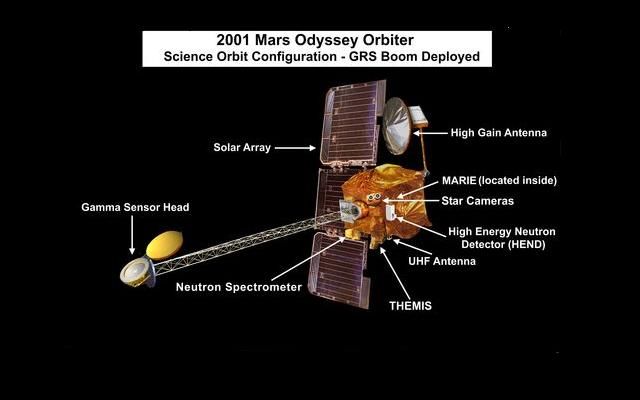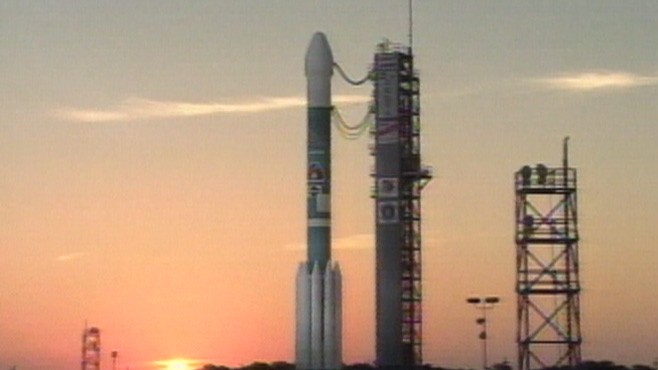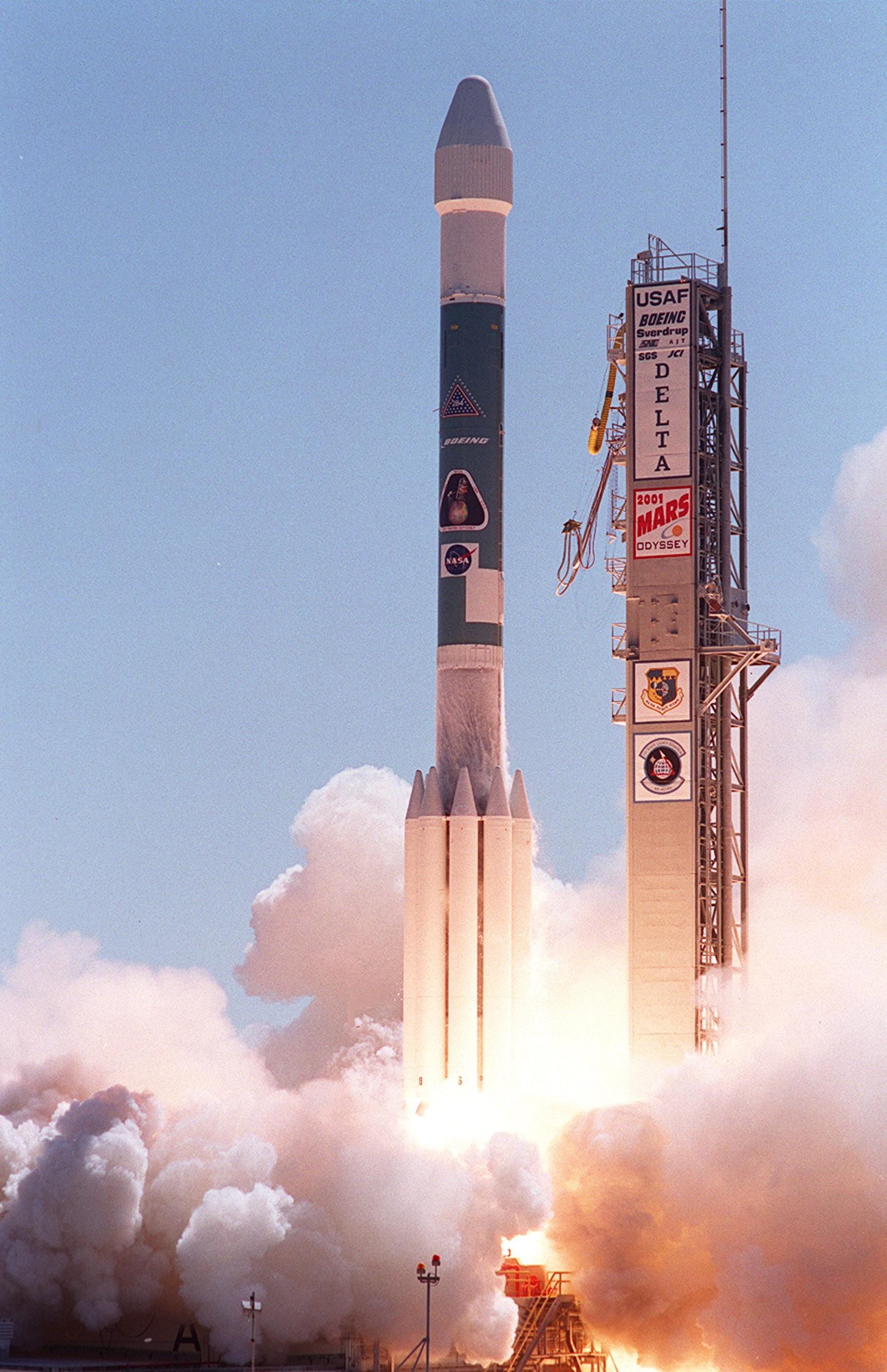2001 Mars Odyssey NASA's latest mission to Mars, an orbiter scheduled for launch on April 7th, will seek out underground water-ice and explore space weather around the Red Planet. 2001 Mars Odyssey previous Mars Surveyor 2001 Orbiter. 2001 Mars Odyssey, named after Arthur C. Clark's novel, '2001: A Space Odyssey,' and previously called Mars Surveyor 2001 orbiter, was successfully launched on April 7, 2001 from Cape Canaveral with a Delta II rocket. On April 7, 2001, NASA's Mars Odyssey spacecraft took off on a six-month, 286-million-mile journey to the red planet.You can license this story through AP Ar. Listen to this story via streaming audio, a downloadable file, or get help. May 28, 2002: Using instruments on NASA's 2001 Mars Odyssey spacecraft, surprised scientists have found enormous quantities of buried treasure lying just under the surface of Mars - enough water ice to fill Lake Michigan twice over.
2001 Mars Odyssey was called the spacecraft that orbits Mars. Lockheed Martin was contracted by NASA for this project with a cost of 297 million USD for the whole mission. The spacecraft is supposed to look for evidence of volcanic activity and water from past or present, by using electronic imagers and spectrometers. The mission’s purpose is to find possible evidence to prove the existence or non existence of life on Mars. The name of the mission is inspired by the famous movie by Stanley Kubrick: 2001: A Space Odyssey.
Odyssey spacecraft was launched in April 2001 from Cape Canaveral and six months later it reached the orbit of planet Mars. For the spacecraft to enter the Martian orbit, it had to have its main engine fired so that the speed could be broke. The technique that it was used is called “aerobraking†and it brings the spacecraft closer to the Planet orbit by orbit, gradually. The mapping mission of Odyssey started in February 2002.

The 2001 Mars Odyssey mission is NASA's longest-lasting spacecraft at Mars. The spacecraft launched on April 7, 2001, and arrived at Mars on October 24, 2001, 0230 Universal Time (October 23, 7:30 pm PDT/10:30 EDT). Its mission includes making the first global map of the amount and distribution of many chemical elements and minerals that make up the Martian surface. It successfully completed its primary science mission from February 2002 through August 2004. The orbiter's extended operations continue today.
Measurements by Odyssey have enabled scientists to create maps of minerals and chemical elements and identify regions with buried water ice. Driver easy crack key. Images that measure the surface temperature have provided spectacular views of Martian topography. Early in the mission, Odyssey determined that radiation in low-Mars orbit -- an essential piece of information for eventual human exploration because of its potential health effects -- is twice that in low-Earth orbit.
Mars Odyssey Probe
The Odyssey orbiter is a communications relay for rovers and landers on Mars including the Mars Exploration Rovers 'Spirit' and 'Opportunity,' the Mars Phoenix lander and the Mars Science Laboratory's Curiosity rover. Images and other measurements from Mars Odyssey help identify potential landing sites for rovers and landers.
2001 Mars Odyssey Mission Summary
More




